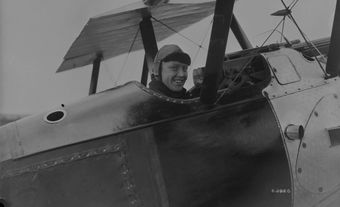Sir James Lucas Yeo
Sir James Lucas Yeo, naval commander (b at Hampshire, Eng, 7 Oct 1782; d at sea 21 Aug 1818). The eldest son of a naval victualler, James Lucas Yeo left school to volunteer for the Royal Navy at age 10. Within four years he had risen to the rank of acting lieutenant. By 1805 he was a commander, in 1807 a post-captain, and on 19 March 1813, he was appointed commander-in-chief on the lakes of Canada, a position he held for the remaining years of the WAR OF 1812.
Yeo's early naval career was marked by intrepid exploits, public accolade, and abundant evidence of fearless grit, all of which boded well for the challenges of the lake command. His promotion to commander, for example, was granted after his daring capture of two gun batteries in El Muros, Spain, in 1805. In recognition of his successes against the French in French Guiana in 1808, the Portuguese prince regent awarded him a knighthood in the order of St. Benedict d'Avis, making him the first Protestant to be so recognized. Returning home to public accolade, he was then knighted by King George III.
This record of achievement was marred in November of 1812, when Yeo's ship ran aground and sank in the Bahamas, along with an American prize ship. He emerged unscathed from the subsequent court martial, however, and was chosen to take command of the lake fleet. The position was both an excellent opportunity and a daunting challenge, but Yeo accepted, and he sailed for Canada in March of 1813.
War on the Lakes
Many contemporaries - and many historians - were disappointed with Yeo's leadership, finding him at best, overly cautious, and at worst, timid. However, material and practical restrictions suggest that Yeo's conduct was not the result of timidity. The fleet was frequently undermanned and lacking in supplies - not to mention ships. Early in his command, he sailed with 32-pound carronade, which, while lethal in close quarters, lacked the accuracy for long-distance combat. His counterpart, American commodore Isaac Chauncey, meanwhile, was both well-manned and armed with 24-pounders, which were more efficient at long distances. As a result, these two officers frequently circled each other, waiting for the most advantageous environment to engage, but rarely doing so. One American officer described them as "lying alongside of each other, like two dogs, always growling and snapping but never biting." Hoping to overcome these difficulties, Yeo oversaw the construction of ever-larger and better-armed ships through the winter of 1813-1814.
Yeo's command was also stymied by a fractious relationship with Sir George PREVOST, a man he grew to dislike intensely, but whose command he was under orders to obey. After the disastrous encounter on LAKE CHAMPLAIN in September of 1814, their relationship soured further, casting a bitter shadow over celebrations of peace, which were announced in February of 1815.
Peacetime Naval Career
Shortly thereafter, Yeo was recalled to England. He left Kingston in March, but detoured through the United States, spending several days in Sackets Harbor, enjoying the peacetime company of his once-adversary, Isaac Chauncey. Arriving in England in May of 1815, he delivered a lengthy and frank report to the admiralty stating that British successes were mainly the result of American "stupidity," rather than preparedness or good management.
There were clearly few doubts about the quality of his leadership, however, as he was immediately given another prestigious command along the west coast of Africa, patrolling for slave ships. This command would be his last. Throughout his life Yeo had suffered from ill health, much of it endemic to naval life (such as a bout of yellow fever in 1798 and malaria in 1805). In August of 1818, he contracted fever and died at sea. His body was preserved in spirits for the transport back to England, where he was buried at the Royal Garrison Chapel in Portsmouth on 8 September 1818.

 Share on Facebook
Share on Facebook Share on X
Share on X Share by Email
Share by Email Share on Google Classroom
Share on Google Classroom


